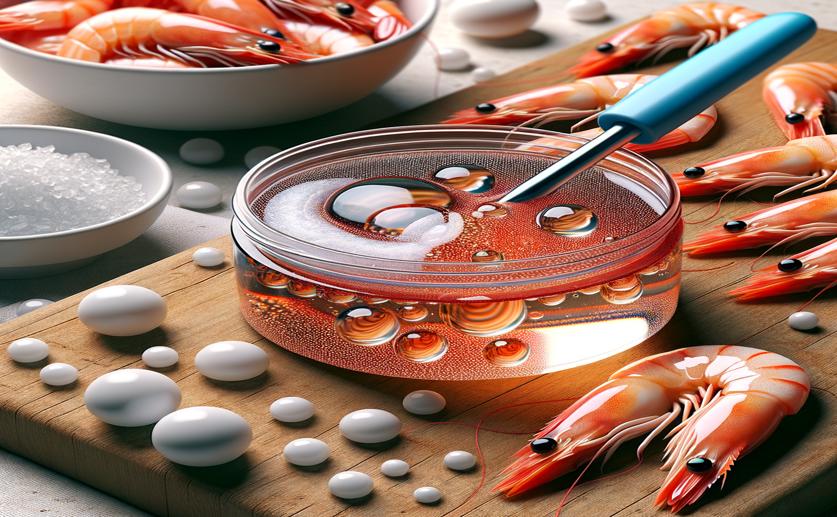
New Hydrogel Indicator with Natural Color to Check Shrimp Freshness
Jim Crocker
15th August, 2024

Image Source: Natural Science News, 2024
Key Findings
- Researchers at Shunde Polytechnic, Foshan, China, developed a robust dual-network colorimetric hydrogel for real-time food freshness detection
- The hydrogel incorporates modified aramid nanofibers (ANF-SN) to enhance mechanical properties and thermal stability
- The hydrogel shows excellent color responsiveness to pH changes and ammonia, making it suitable for monitoring shrimp freshness
References
Main Study
1) Preparation of a colorimetric hydrogel indicator reinforced with modified aramid nanofiber employing natural anthocyanin to monitor shrimp freshness.
Published 13th August, 2024
https://doi.org/10.1111/1750-3841.17290
Related Studies
2) Fabrication of halochromic smart films by immobilizing red cabbage anthocyanins into chitosan/oxidized-chitin nanocrystals composites for real-time hairtail and shrimp freshness monitoring.
3) Preparation and characterization of indicator films from carboxymethyl-cellulose/starch and purple sweet potato (Ipomoea batatas (L.) lam) anthocyanins for monitoring fish freshness.



 16th May, 2024 | Jim Crocker
16th May, 2024 | Jim Crocker